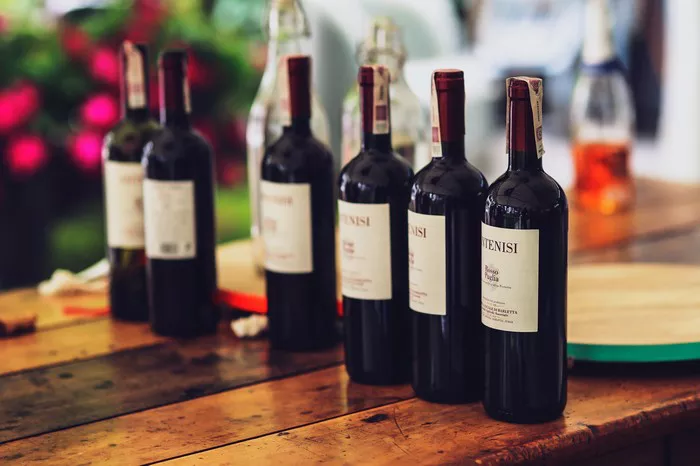Sauvignon Blanc, a beloved white wine known for its crisp acidity and refreshing flavors, has garnered immense popularity among wine enthusiasts worldwide. However, as more people become health-conscious, questions about its calorie content arise. In this comprehensive guide, we delve into the calorie count of Sauvignon Blanc, particularly focusing on an 8 oz serving size.
Understanding Sauvignon Blanc: A Brief Overview
Before we explore the caloric content of Sauvignon Blanc, it’s essential to understand the wine itself. Sauvignon Blanc is a dry white wine originating from the Bordeaux region of France. Its flavor profile typically includes notes of citrus, green apple, grass, and herbs, with variations influenced by terroir and winemaking techniques. Often enjoyed as a standalone aperitif or paired with various foods, Sauvignon Blanc’s versatility contributes to its widespread popularity.
Decoding the Caloric Content: How Many Calories in 8 oz of Sauvignon Blanc?
One of the most common queries among wine enthusiasts is the calorie count of Sauvignon Blanc, especially when consumed in a standard 8 oz serving. Understanding the caloric content of this wine is crucial for individuals monitoring their calorie intake, whether for dietary reasons or weight management.
In general, an 8 oz serving of Sauvignon Blanc contains approximately 160 calories. However, it’s important to note that this value can vary slightly depending on factors such as the wine’s alcohol content, residual sugar levels, and any additional additives.
The calorie count of Sauvignon Blanc primarily stems from its alcohol and sugar content. Alcohol, a significant contributor to the overall calorie content of wine, contains approximately 7 calories per gram. Meanwhile, sugar, if present, adds additional calories. However, Sauvignon Blanc is typically a dry wine, meaning it contains minimal residual sugar compared to sweeter wine varieties like Riesling or Moscato.
Factors Influencing Caloric Content
Several factors influence the caloric content of Sauvignon Blanc, highlighting the complexity of determining precise calorie counts. These factors include:
Alcohol Content: The alcohol by volume (ABV) of Sauvignon Blanc can vary between different brands and vintages. Generally, wines with higher alcohol content tend to have more calories per serving. Therefore, Sauvignon Blanc with a higher ABV may contain slightly more calories than those with lower alcohol levels.
Residual Sugar: While Sauvignon Blanc is typically a dry wine, some variations may contain small amounts of residual sugar. Wines with higher residual sugar content will have slightly more calories than those with minimal sugar levels.
Winemaking Practices: Winemaking techniques such as oak aging or malolactic fermentation can influence the flavor and texture of Sauvignon Blanc. While these practices may not significantly impact the wine’s calorie count, they can affect its overall taste profile.
Additives: Some winemakers may add certain additives or adjuncts during the winemaking process to enhance flavor, texture, or stability. While these additives are generally considered safe for consumption, they may contribute minimally to the wine’s calorie content.
Making Informed Choices: Tips for Health-Conscious Consumers
For individuals mindful of their calorie intake, making informed choices when selecting and consuming Sauvignon Blanc can help maintain a balanced lifestyle. Here are some tips to consider:
Check the Label: Before purchasing a bottle of Sauvignon Blanc, review the label for information on alcohol content and residual sugar levels. Opting for wines with lower ABV and minimal residual sugar can help reduce calorie intake.
Practice Moderation: While enjoying a glass of Sauvignon Blanc can be a delightful experience, moderation is key. Limiting consumption to one standard serving (approximately 5 oz) can help manage calorie intake while still allowing for indulgence.
Consider Alternatives: If you’re looking to reduce calorie intake without sacrificing flavor, consider exploring lighter wine options such as lower-alcohol Sauvignon Blanc or other varietals like Pinot Grigio or Albariño.
Pair Wisely: When enjoying Sauvignon Blanc with food, opt for lighter, healthier dishes that complement its crisp acidity and citrusy notes. Incorporating fresh salads, grilled seafood, or vegetable-based dishes can create balanced meal pairings.
Stay Hydrated: To mitigate the dehydrating effects of alcohol and support overall well-being, remember to drink plenty of water alongside your glass of Sauvignon Blanc.
Conclusion
In conclusion, understanding the caloric content of Sauvignon Blanc, particularly in an 8 oz serving, empowers individuals to make informed choices about their wine consumption. While this popular white wine is relatively low in calories compared to other alcoholic beverages, factors such as alcohol content, residual sugar levels, and winemaking practices can influence its overall caloric count. By practicing moderation and selecting wines thoughtfully, wine enthusiasts can indulge in the pleasures of Sauvignon Blanc while maintaining a balanced lifestyle.


